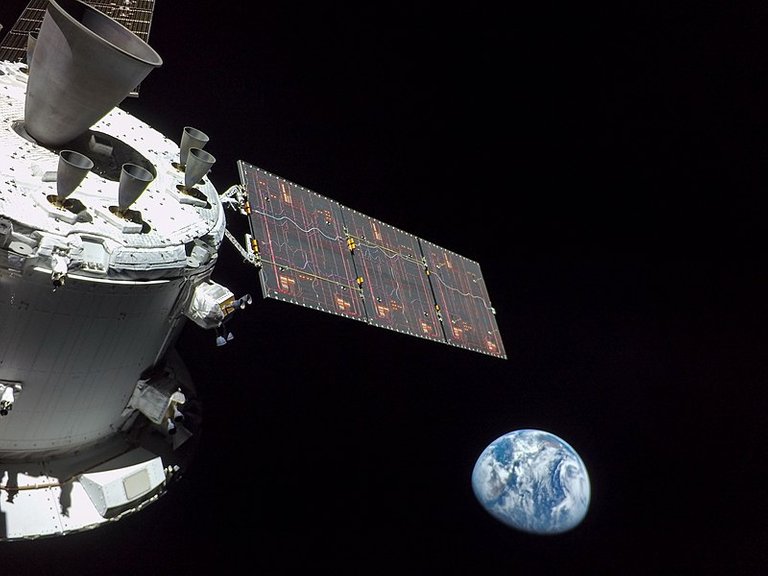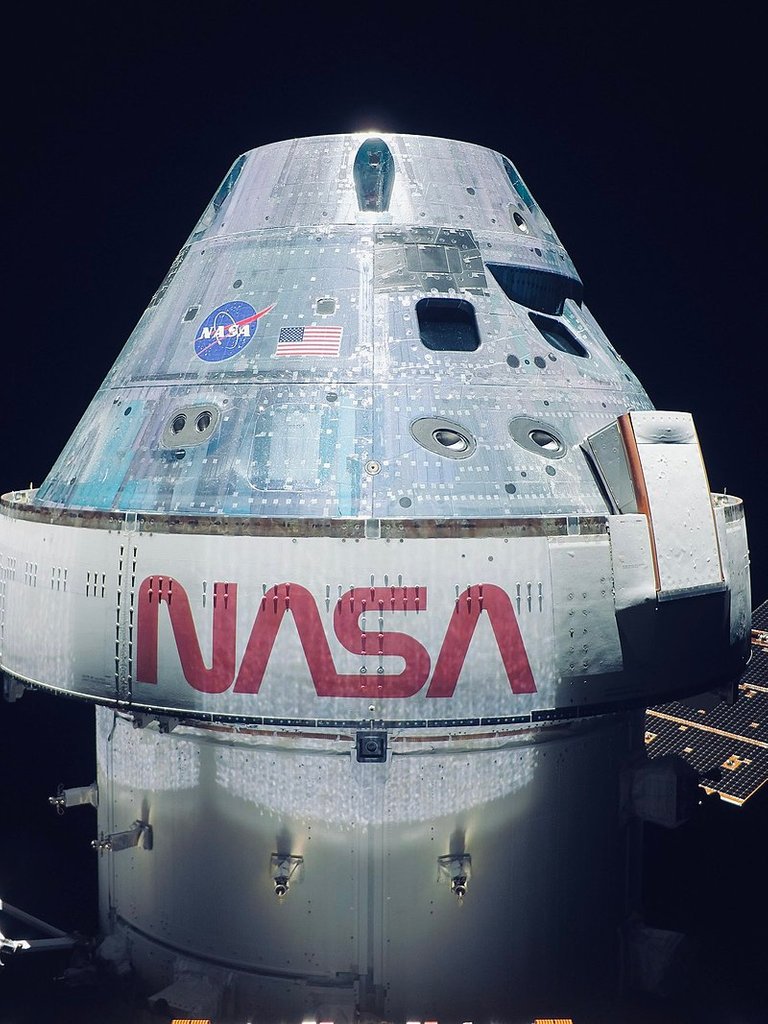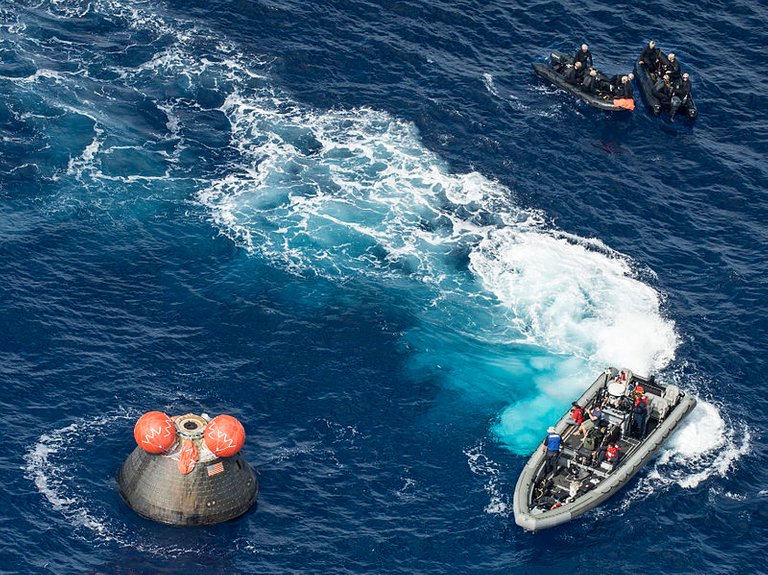The Artemis I mission continues to progress successfully and is nearing completion. This Tuesday, December 6, NASA's Orion spacecraft departed the Moon's gravitational sphere of influence, almost a day after the engine ignition that has given the spacecraft the necessary momentum to put the spacecraft on a return trajectory to Earth.

View of the Earth from the spacecraft. Source: Wikipedia.org.
On its 20th day of mission, the spacecraft had achieved another milestone, flying 80 miles above the surface of the Moon, which would be its second and final approach to the Moon, and this flyby would have allowed the spacecraft to take advantage of the Moon's gravity to be launched on a trajectory back to Earth. Prior to this flyby, the service module thrusters were used to perform the trajectory correction, and a fuel burn lasting 20.1 seconds increased the spacecraft's velocity by 2.04 ft/sec. And with this ignition for the flyby the spacecraft was committed to a return trajectory.

View of the Moon when the spacecraft was performing a close flyby. Source: Wikipedia.org.
On the other hand, during this phase of the mission, flight controllers used the spacecraft's mounted cameras to make an inspection of the spacecraft's external surfaces, especially the thermal protection equipment protecting the crew module and the European service module, remember that re-entry to Earth is the most demanding test for spacecraft, and in a few days Orion will have to pass through the Earth's atmosphere, flying faster and getting hotter than it has done so far, the re-entry will be the final and hardest test that the Orion spacecraft will have to pass to be able to take astronauts on board in a next mission.
In this sense, the images taken by the cameras will allow the controllers to make a second inspection of the general conditions of the external surface of the spacecraft, the first one was made after the launch, after the spacecraft will pass through the part of the Earth's atmosphere that has a high density of space debris. A third and final photographic review of the spacecraft's exterior will be performed on Friday, December 9, a couple of days before reentry, which is scheduled for Sunday, December 11.

A selfie taken by NASA's Orion Spacecraft. Source: Wikipedia.org.
Meanwhile, on Earth, teams are already preparing to recover the spacecraft after splashdown, which is planned to be off the coast of California, the exact site will be defined this Thursday 08, since a ship with a team of divers and technicians should be waiting for the spacecraft to rescue it as soon as it splashes down. Once secured the capsule will be towed to the recovery ship, which for this mission will be the USS Portland, and then will be placed in a part of the deck that contains a cradle specially designed for the ship.

Recovery of the EFT-1 Orion, December 5, 2014. Source: Wikipedia.org.
Well my friends, let's hope that the mission continues to develop as planned and we will soon know that the Orion ship is close to home.
References
NASA. Artemis I


